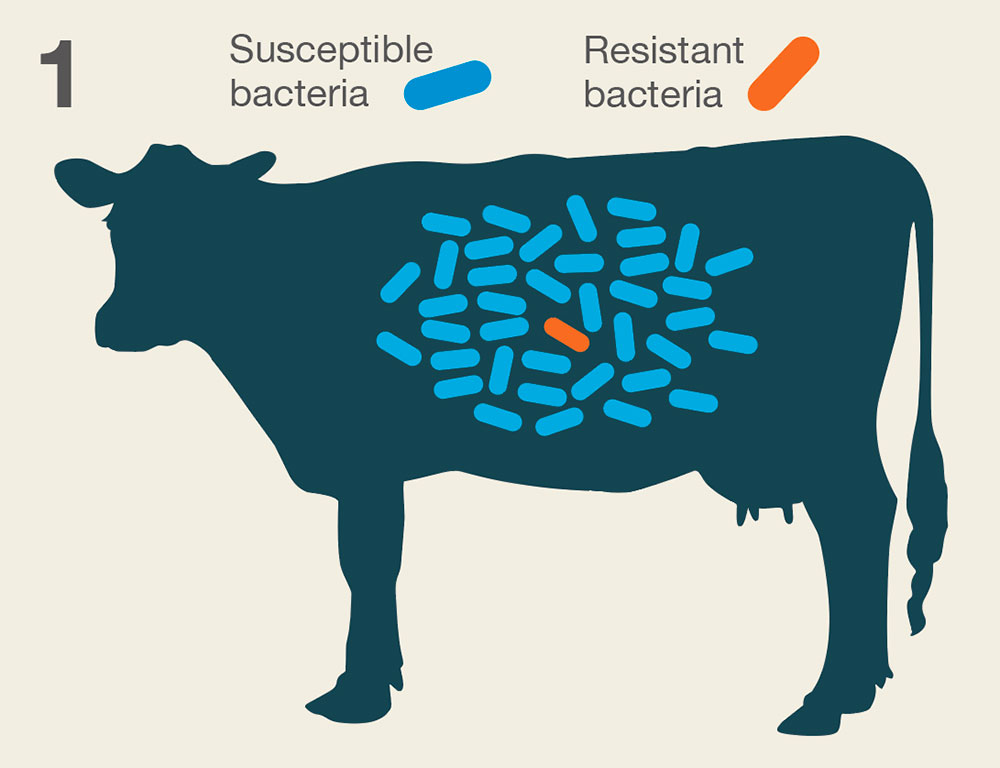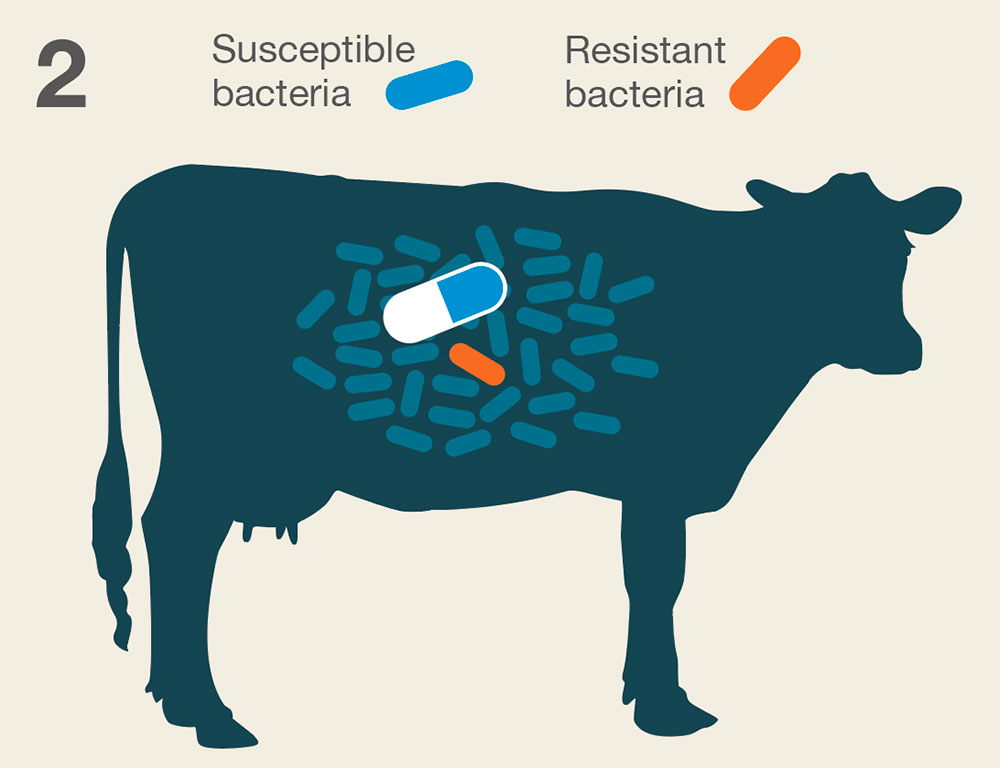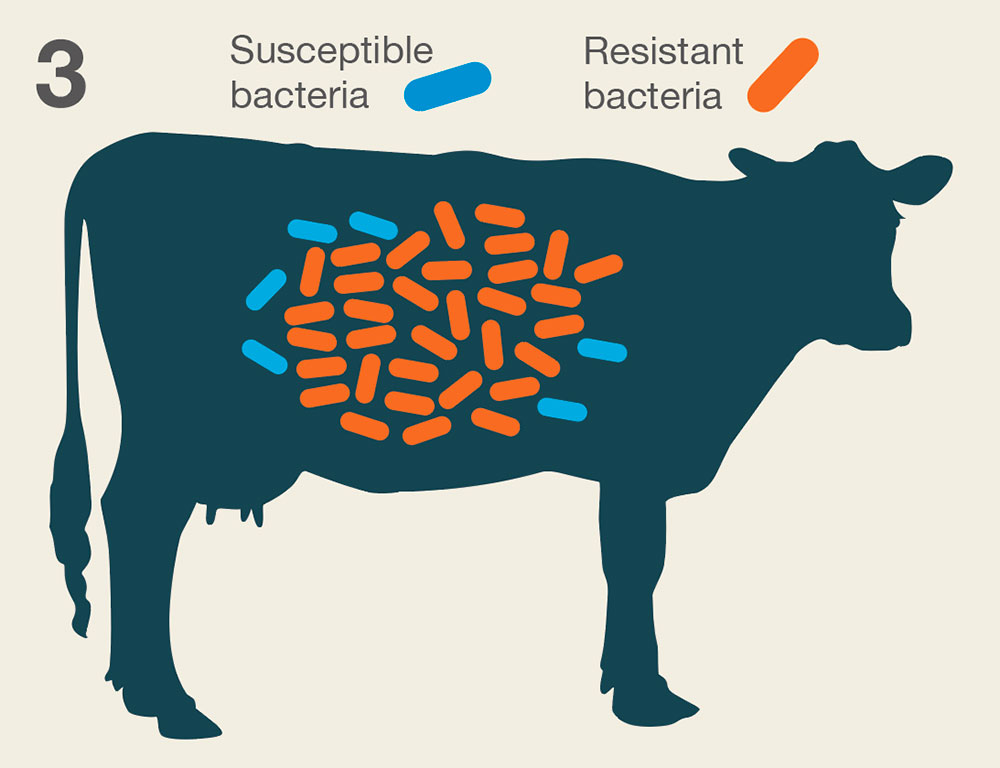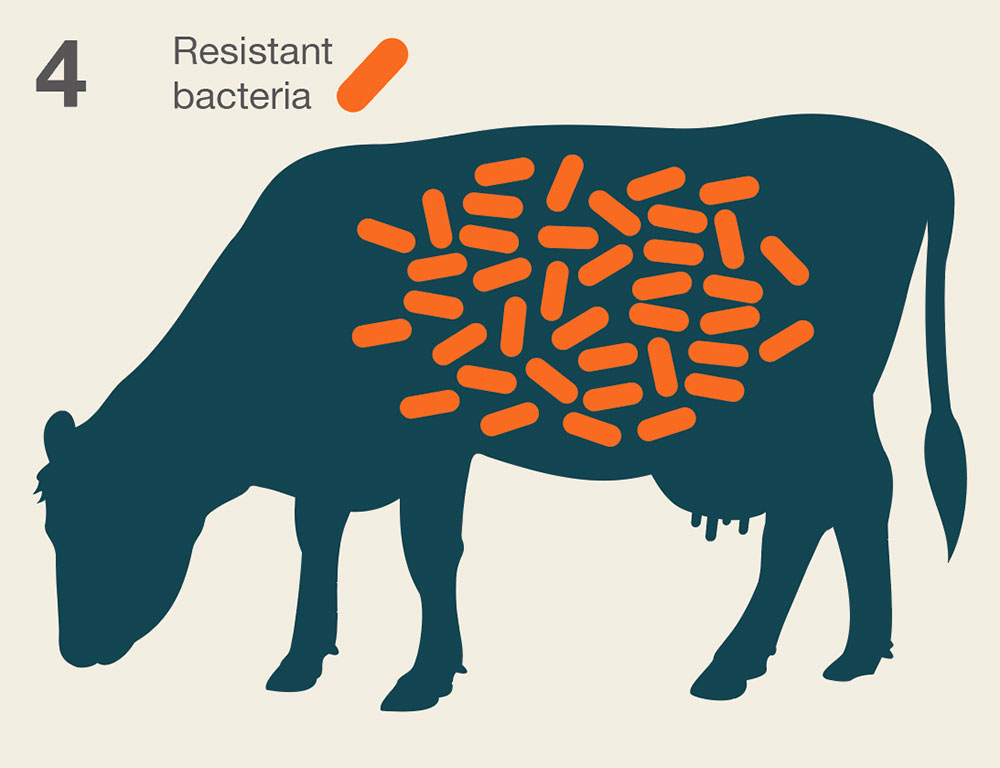- Home
- Knowledge library
- Antibiotic resistance
Antibiotic resistance
Find out more about how antibiotic resistance occurs, spreads, and continues to be a major global threat.
Back to: Responsible use of antibiotics in livestock
How does antibiotic resistance happen?
When an antibiotic is used, bacteria that can resist that antibiotic have a greater chance of survival than those that are susceptible to the antibiotic (and are killed). Those that are not killed quickly multiply.
Some resistance occurs naturally as all microbes can adapt to their surrounding environment. Bacteria can produce and use antibiotics against other bacteria, leading to a low level of natural selection for resistance to antibiotics.
However, the current levels of antibiotic-resistant bacteria are attributed to the overuse and incorrect use of antibiotics, both in human healthcare and in the agriculture sector.
Antibiotic resistance tactics
- Some bacteria are naturally resistant to certain types of antibiotics
- Some bacteria mutate to produce enzymes that ‘deactivate’ antibiotics, or change the target area on the bacteria that the antibiotic would normally attack
- Some bacteria create mechanisms to push the antibiotic back out of the cell when it attacks
Bacteria can acquire antibiotic resistance genes from other bacteria in several ways. They can transfer genetic material through a simple ‘mating’ process or through plasmids that ‘reprogramme’ other bacteria to be resistant to antibiotics.
How antibiotic resistance spreads
Antibiotic resistance spreads as bacteria themselves move from place to place, through:
- Direct animal contact
- Contaminated materials and housing
- Water, food and air
- People transferring resistant bacteria, for example, on unwashed hands or by coughing
1. Antibiotic resistance occurs when an antibiotic is no longer able to effectively control or kill bacteria.

2. When an antibiotic is used, bacteria that can resist that antibiotic have a greater chance of survival than those that are ‘susceptible’.

3. These resistant bacteria can multiply and can outnumber the susceptible bacteria.

4. Antibiotic resistance means that the bacterial infection can become life-threatening or life-limiting.

Avoiding overuse
Antimicrobial resistance is a major global threat of increasing concern.
Livestock producers have an important responsibility to protect human and animal health by using antibiotics and anthelmintics responsibly, to minimise the risk of antibiotic resistance (AMR) and anthelmintic resistance.
Antimicrobial resistance
While the sensible use of antimicrobials is important to treat animal diseases, its overuse and misuse can contribute to antimicrobial resistance. Effectively addressing AMR requires everyone working with livestock to join others in committing to implement practices to minimise the need for, and use of, antimicrobials, while maintaining animal health, welfare and productivity.
Useful links
If you would like to order a hard copy of Using medicines responsibly, please contact publications@ahdb.org.uk or call 0247 799 0069.
Topics:
Sectors:
Tags:

